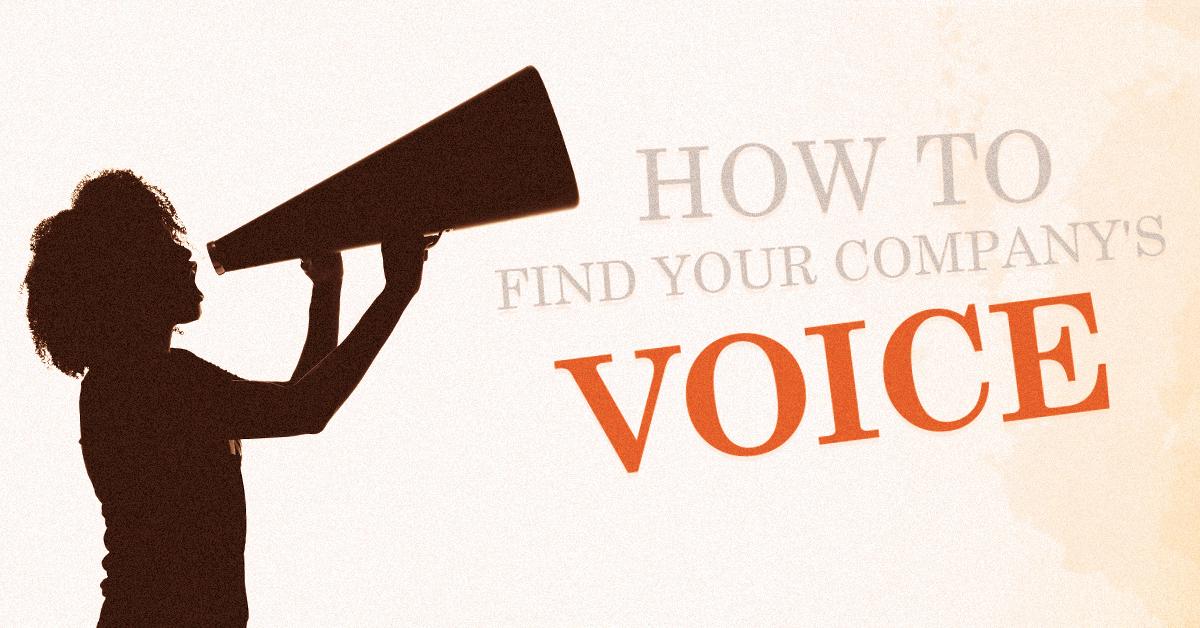Whether you’re starting up or starting over, developing your company’s voice is a key marketing objective. But what does “voice” mean, exactly? And why is it important? If you’re new to marketing or want a quick refresher course on branding, here’s what’s up.
First, the basics.
Your voice is the way you “sound” in print or over the airwaves. It demonstrates your company’s personality. It is defined by the words and phrases you choose and how you use them.
Do you want your company to sound sophisticated? Lackadaisical? Professional yet conversational? Like it or not, your tone of voice elicits a particular mood in your audience.
Your audience’s mood is how they feel about your company, product, or service. Do you want your audience to feel relieved? Excited? Outraged? In marketing terms, the mood you create is your brand—it is the essence of your company. It is how people perceive you, for better or worse.
Whatever your brand is, it should inspire action. That relief, excitement, or outrage you’ve just created—where is it all going? What’s it all for? Funnel that energy into a clear-cut outcome for your audience, whether it’s getting their hearing checked, buying a new car, or voting for a presidential candidate.
What’s the point?
You want to create a winning brand. To do so, your tone must resonate with your audience.
Most audiences expect and appreciate these universal or “umbrella” tones:
- Empathetic: “We’ve been in your shoes and we know how you feel.”
- Friendly: “We’re here to help and we’re happy to do it!”
- Trustworthy: “We have the experience, talent, and connections to help.”
- Human: “Hey, it’s nice to meet you. How can we help?”
Every piece of messaging should convey one of these umbrella tones. Think of them as “best practice” tones of voice.
Finding your voice.
Yes, your voice should reflect these umbrella tones. But it should also have its own key tones, or specific characteristics that define your brand and call your audience to action.
Okay, so who is your audience and what do they want? Let’s say you’re a Buffalo-based staffing agency that specializes in the startup space. Here’s who you might target and what they’re looking for.
- Job seekers: “I am looking for a job.”
- Entrepreneurial spirits: “I want to engage the startup/emerging business ecosystem.”
- Buffalo expats: “I moved away from Buffalo, but should I go back?”
- Buffalo enthusiasts: “I want to read good news about the city I love.”
- Employers: “I am looking for fresh talent to grow my business.”
- Investors: “I am interested in fueling startup activity.”
The next step is to find out what key tones speak to these people and how they’ll react to them. In this example, we’ll pinpoint five key tones:

Crafting your message.
Now that you know how you should sound, what your audience should feel, and what they should do, you can start crafting a message that amplifies your voice. For example:
Local Staffing Agency is a hub of new opportunities in a vibrant community of fresh thinkers, doers, and movers. You want jobs? We’ve got ‘em. Networking opportunities? You bet. Special events? Let’s go.
Move forward in the City of Good Neighbors with your new network of startup friends at Local Staffing Agency.
[FIND JOBS NOW]
Easy, right?
Speaking from experience, we believe the most fun part of marketing is the creative—and that means helping your company find its voice. Are you an up-and-coming company, or are you in the market for a re-brand? We’re here to help!
For an extra edge in your industry, give us a call at 716-926-9266 or send us a message today! And don’t forget to follow us on LinkedIn, Facebook, and Twitter!
Sign up for our newsletter...
Give us your email and get our stuff delivered to your inbox. You might not regret it.
Thanks for subscribing! You won't be sorry.
Uh oh. Something went wrong.
